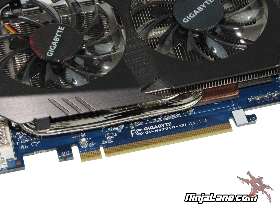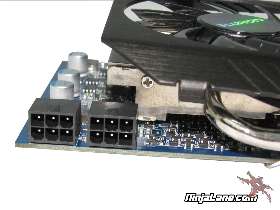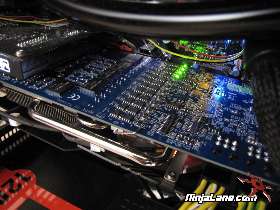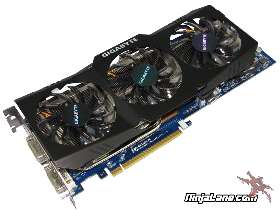After careful consideration I have decided to transfer all hardware review activities to a new domain. I purchased Hardwareasylum.com in 2012 and have been working hard to build a new and improved Ninjalane on that domain. If you are reading this you have reached one of the archived articles, news, projects and/or reviews that were left behind during the site migration.
Please update your bookmarks and be sure to visit the new and improved Ninjalane at Hardwareasylum.com
Gigabyte GeForce GTX 470 Super Overclocked Edition Video Card Review
Author: Will West
Published: Tuesday, September 07, 2010
Card Layout and Features Cont.
The Gigabyte GTX 470 SOC is a fully 16x PCI-Express 2.0 compliant, but will work just fine in older 16x PCI-Express slot motherboards.
This unit requires 2x 6-pin PCI-Express power connectors to operate. Your PSU will need to be at least 550 watts with 38amps on a 12v rail.
Gigabyte has gone an extra step for the extreme overclockers or the guys that just love to play with voltage meters. They have included voltage read points on the back of the card to get the exact reading of the voltage being used. Above the test points you will find 5 film capacitors for the best and most stabile power available on a GeForce GTX 470 out today.
Another very interesting idea from Gigabyte is being able to watch the voltage load on the back of the card. As the GTX 470 SOC uses more power the green LED lights make their way across the back of the card. This not only indicates total load but is a very cool effect that can be seen thru a side panel window.
WINDFORCE 3X
Gigabyte is all about reinventing the GTX 470 image from a power hungry to a quiet running power sipping beast. To do this they need a cool and quiet heatsink called the Windforce 3X. The name is pretty self explanatory, and with three fans blowing across 4 heatpipes you can keep excess heat under control with very minimal noise.
The heatpipes that run along the length of the video card are attached to the GPU using a copper vapor chamber plate. This allows for an even distribution of heat across all of the heatpipes and away from the GPU.







